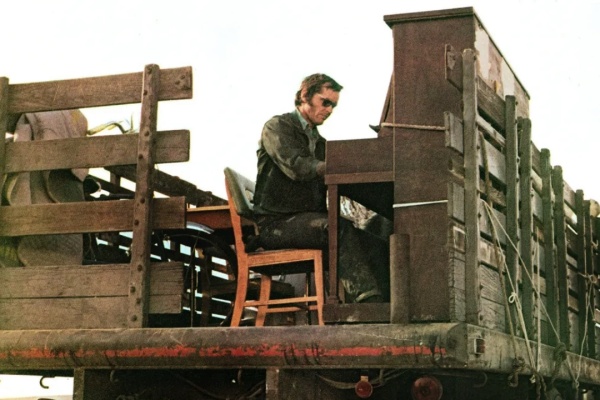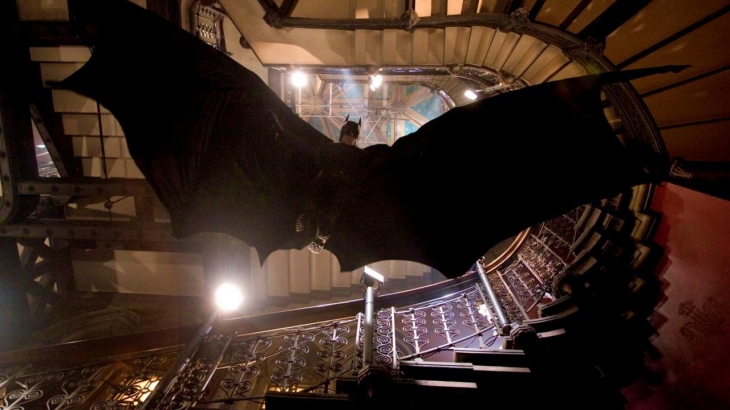One of the most complex and innovative original screenplays of the 2000s decade, Nolan’s early masterwork is a terrific mystery-thriller told in reverse-chronological order.

Review #282
Dir. Christopher Nolan
2000 | USA | Mystery/Thriller | 113 mins | 2.39:1 | English
NC16 (passed clean) for violence, language and some drug content
Cast: Guy Pearce, Carrie-Anne Moss, Joe Pantoliano
Plot: A man with short-term memory loss attempts to track down his wife’s murderer.
Awards: Won Screenwriting Award & Nom. for Grand Jury Prize (Sundance); Nom. for 2 Oscars – Best Original Screenplay, Best Film Editing.
Source: Exclusive Media
Accessibility Index
Subject Matter: Moderate – Memory Loss
Narrative Style: Complex
Pace: Normal
Audience Type: Slightly Mainstream
Viewed: DVD
First Published: 16 Apr 2008
Spoilers: No
The British director of Memento, Christopher Nolan, fronts an exciting ‘American New Wave’ movement with two other promising writer-director talents in Paul Thomas Anderson and Darren Aronofsky. The trio are the modern answer to the 1970s brats – Steven Spielberg, Martin Scorsese, Francis Ford Coppola.
Memento made the international film community sit up and applaud the arrival of Nolan, who is responsible for the stunning reboot of the Batman series with Batman Begins and its upcoming sequel, The Dark Knight.
Memento redefines moviemaking in a way not witnessed for years. The plot is simple though, a man (Guy Pearce) loses the ability to make new memories after a horrific incident in which his wife was murdered. He is determined to find the killer with the aid of photos and tattoos, which are the only things he can rely on to help him remember.
“We all lie to ourselves to be happy.”
With this, Nolan crafts out one of the most scintillating screenplays since Bryan Singer’s Oscar-winning The Usual Suspects (1995). Nolan opts for a non-linear storytelling technique; he recounts the sequence of events backwards in chapters running in reverse order. So the beginning of Memento shows the conclusion and vice versa.
For good measure, Nolan ups the complexity of Memento‘s narrative composite by adding a separate chain of sequences running linearly which act as transitions that complement the non-linear sequences.
Although it seems mind-boggling initially, viewers will eventually get used to how Memento is presented. Memento is an ambiguous motion picture. And because of its ambiguity, it’s judged to be one of the more intelligent films around, leaving viewers in a positive daze as they reconstruct what had actually happened since there are countless ways of interpreting the film.
The suspense in several scenes is top-notch which are accompanied by low pulsating beats. The cinematography, lighting, and film editing are also plus points that can be further appreciated with subsequent viewings. Even then, the movie experience does not deteriorate. Memento is certainly one of the best independent efforts ever to reach our screens.
Grade: A
Trailer:
Music:





















[…] Nolan, Christopher […]
LikeLike
[…] Nolan, Christopher […]
LikeLike
[…] Nolan, Christopher […]
LikeLike
[…] Nolan, Christopher […]
LikeLike
[…] the footsteps of Lee Chang-dong’s Peppermint Candy (1999) and Christopher Nolan’s Memento (2000)—and it is this formal brilliance and the uncompromising use of sound design that proves to […]
LikeLike
[…] of filmmakers experimented with that narrative technique, most notably in Christopher Nolan’s Memento (2000), but most powerfully in Gaspar Noe’s Irreversible (2002) and Lee Chang-dong’s Peppermint […]
LikeLike